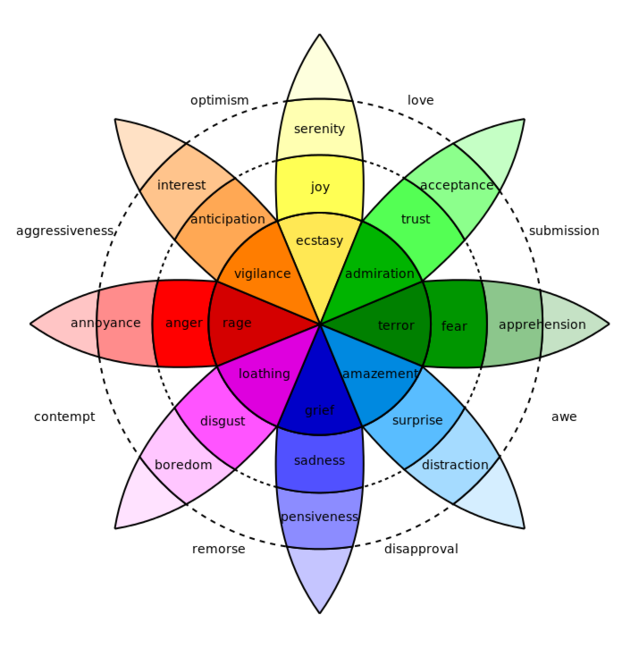In the 20th century, Paul Ekman identified six basic emotions (anger, disgust, fear, happiness, sadness, and surprise) and Robert Plutchik eight, which he grouped into four pairs of polar opposites (joy-sadness, anger-fear, trust-distrust, surprise-anticipation).
It is said that basic emotions evolved in response to the ecological challenges faced by our remote ancestors and are so primitive as to be ‘hardwired’, with each basic emotion corresponding to a distinct and dedicated neurological circuit. Being hardwired, basic emotions (or ‘affect programs’) are innate and universal, automatic, and fast, and trigger behaviour with a high survival value. So much can hardly be said of more complex emotions such as humility or nostalgia, which, for example, are never attributed to infants and animals.
The other day, I opened a cutlery drawer on a large lizard, which, of course, I had not been expecting to find. As the critter darted off into the blackness behind the drawer, I unthinkingly jumped back and slammed the drawer shut. Having done this, I suddenly discovered myself to be feeling hot and alert and primed for further action. This basic fear response is so primitive that even the lizard seemed to share in it, and so automatic as to be ‘cognitively impenetrable’, that is, unconscious and uncontrollable, and more akin to a reaction than a deliberate action.
One hypothesis is that basic emotions can function as building blocks, with more complex emotions being blends of basic ones. For instance, contempt could amount to a blend of anger and disgust. However, many complex emotions cannot be deconstructed into more basic ones, and the theory does not adequately explain why infants and animals do not share in complex emotions.

In 1980 Robert Plutchik constructed a wheel-like diagram of emotions visualising eight basic emotions, plus eight derivative emotions each composed of two basic ones.
Source: Wikicommons
Instead, it could be that complex emotions are an amalgam of basic emotions and cognitions, with certain combinations being sufficiently common or important to be named in language. Thus, frustration could amount to anger combined with the belief that ‘nothing can be done’. Again, many complex emotions resist such analysis. Moreover, ‘basic’ emotions can themselves result from quite complex cognitions, for instance, Tim’s panic upon realizing—or even just believing—that he has slept through an important exam.
Although basic emotions have been compared to programs, it does seem that their potential objects are open to cultural conditioning. If poor Tim fears having missed his exam, this is in large part because of the value that his culture and micro-culture attach to academic success. With more complex emotions, it is the emotion itself (rather than its potential object) that is culturally shaped and constructed. Schadenfreude is not common to all peoples in all times.
Neither is romantic love, which seems to have emerged in tandem with the novel. In Madame Bovary, itself a novel, Gustave Flaubert tells us that Emma Bovary only found out about romantic love through ‘the refuse of old lending libraries’. These books, he continues,
...were all about love and lovers, damsels in distress swooning in lonely lodges, postillions slaughtered all along the road, horses ridden to death on every page, gloomy forests, troubles of the heart, vows, sobs, tears, kisses, rowing-boats in the moonlight, nightingales in the grove, gentlemen brave as lions and gentle as lambs, too virtuous to be true, invariably well-dressed, and weeping like fountains.

